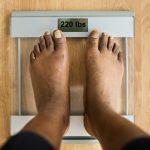
People who are grateful for what they have tend to live longer, a new study reports. Older women who scored highest on a questionnaire measuring gratitude had a 9% lower risk of premature death from any cause, compared to those with the least gratitude, according to findings published July 3 in the journal JAMA Psychiatry. The results suggest that feelings of gratitude “may increase longevity among older adults,” lead author Ying Chen, a research scientist at the Harvard T.H. Chan School of Public Health, said in a news release. For the study, researchers analyzed data gathered from the long-term Nurse’s Health Study. In 2016, more than 49,000 women in the study with an average age of 79 completed a six-question gratitude test. They had to agree or disagree with statements like “I have so much in life to be thankful for” and “If I had to list everything that I felt grateful for, it would be a very long list.” Three years later, researchers followed up to identify deaths among those women. They found that more than 4,600 participants had died, most commonly of heart disease. Those with the highest levels of gratitude had a lower risk of death from any cause, compared to those with the lowest, results show. Gratitude appeared to protect against every specific cause of death included in the study, and… read on > read on >



























-300x200.jpg)










